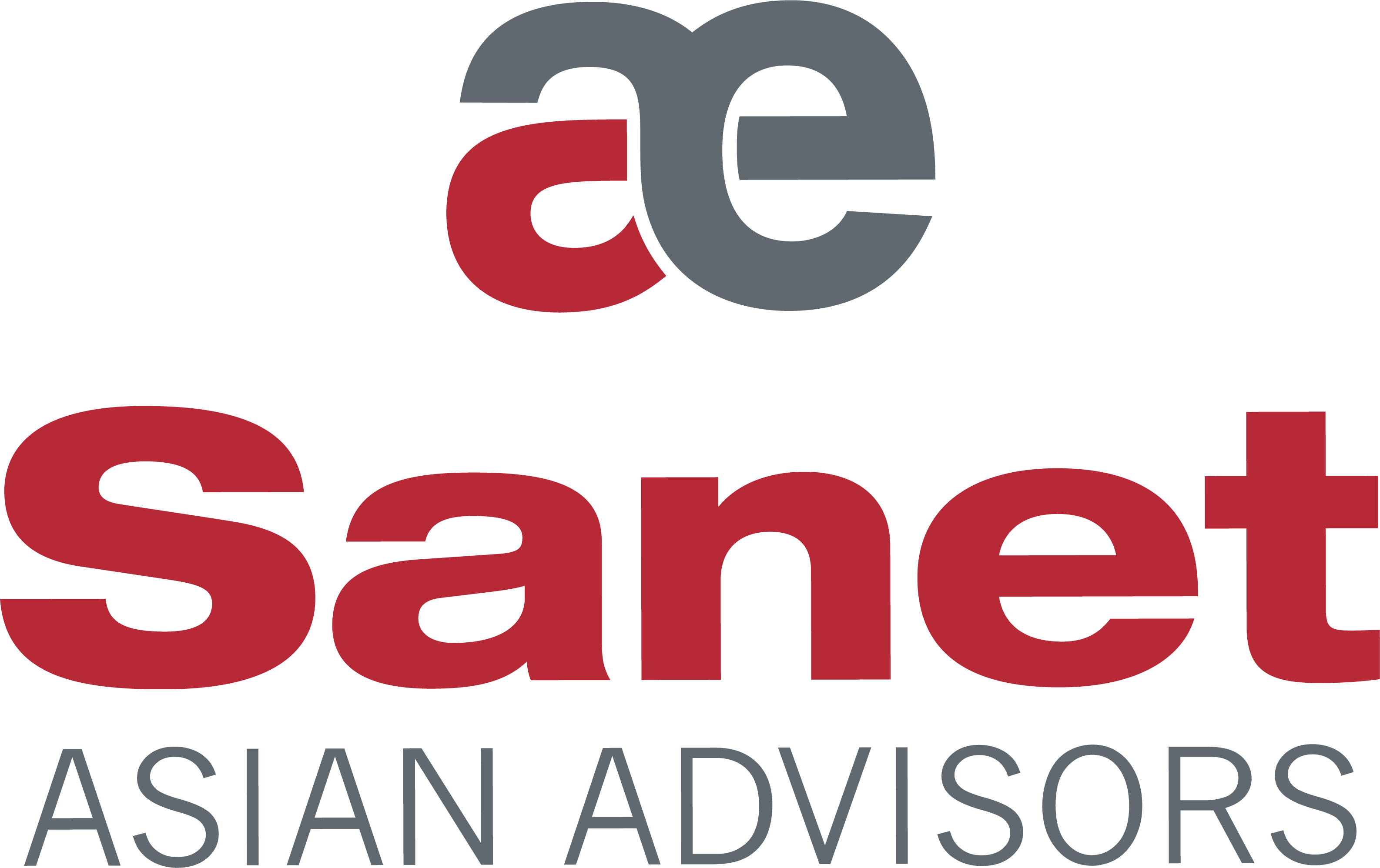Finding the right sales partner in Southeast Asia
Dos and Don’ts to Ensure a Successful Partner Search
The industrial consultants at SANET ASEAN ADVISORS in Bangkok (www.sanet.co.th) have identified and evaluated hundreds of sales partners for western companies since 2004. Sanet guides their clients through the entire process all the way up until the partnership contract signing.
Mistake No. 1: Relying on trade fair contacts and your own connections Quality manufacturers already have good agencies and good agencies already have access to quality manufacturers. It turns out those walking around looking to hook up with agencies at trade fairs do not usually belong to successful sales agencies – if you have a sign on your expo booth that reads “Seeking representation”, it’s akin to putting a target on your back for third-rate agents. The same holds true when it comes to contacts and references obtained basically by chance during business trips: if you are hoping to go this route, you might as well just go ahead and buy a lottery ticket. Mistake No. 2: Believing an offer which seems too good to be true Known for their politeness and hospitality, Asians are particularly skilled at making good impressions. They tell you the usual stories of how well-connected they are with different networks in Asia, and after a spectacular dinner with two big-name clients, you think to yourself, “this is the right guy for a partnership”. Then reality sets in and you quickly start to realize that your partner might not have enough capital to cover the fully supply of goods and spare parts you need up front. Or perhaps his so-called “network” consists of entirely of your partner’s “acquaintances”, none of whom are people of influence in your market. By the time the first round of sale planning is being drafted, you realize that it was all just an illusion in the start, but it’s too late: your partner has a whole list of seemingly plausible excuses which no one can ever hope fact check. Mistake No. 3: “We’ve got nothing to lose” This sentence might be fun to say, but it is utter nonsense. Sure, it is nice when suddenly a new interested customer approaches you, especially if they are looking to place an actual order. They tell you that “naturally” they would like to receive in return the exclusive rights to represent your product in their home country. The hubris of new business causes many to let their guard down: it often turns out that the machines they ordered were actually for personal use and were delivered with a hefty margin for the importer. External purchases remain few and far between, as your partner’s core business is not trade-related. Of course, in the first year the partner still helps to bring in an increase in revenue. If nothing else comes of it, however, it’s time to put him on a one-year probationary period. By the time year three rolls around, you definitely have something to lose! If you decide to get rid of the partner, it could mean you then have no revenue coming in at all. It could also mean bad press or issues with contract termination. You can lose years of time being strung along by such a partner, and all the while your competitors will be out there securing their own shares of your target market. Mistake No. 4: The DIY partner search Stories of best practices from other countries are of course helpful when dealing with new markets. It is also possible to attract the attention of international customers in a new market. They might even provide some advice regarding potential sales partners. After all, they already know how to handle contracts, since they learned all that in the country they were living in before. All of that may very well be. However, one must not forget that all that advice and experience drawn from other regions is based on subjective and anecdotal knowledge. Everything you knew may prove itself to be insufficient or even totally wrong when it comes to your new market. In any case, you will be very unprepared for your new market without a professional conceptualization of your chances, options and potential risks. Reaching out to potential partners on your own is particularly disadvantageous. Your position is weakened considerably by the fact that you come across merely as someone looking to find a way to get their products onto the market. As commissioned industrial consultants, we are able to offer potential sales partners access to superb representation, as long as they are willing to undergo the application process. What a difference this makes when it comes to your positioning during a negotiation! Professional sales recruitment First and foremost, we need to clear up a common misconception: professional sales recruiting is not reserved exclusively for those with a wide-reaching network in their industry. This can of course be beneficial, but it does not have to be, as sometimes it results in people turning to their same trusted acquaintances time and time again, never taking the time to objectively re-evaluating their achievements and performance. The principals of the SANET ASEAN ADVISORS in Thailand come from a wide-range of different branches, from investment assets and automobile accessories to hair products and foodstuffs. When asked about his experiences with particular branches, the Sanet founder and legal expert, Dr. Gunter Denk, answered with the following analogy:
“A lawyer does not have to have experience in bank robberies to be successful in their defence of a robber in court. The important thing is that the lawyer understands the rules and knows how to convey the facts in the correct manner.“
The same holds true for Sanet’s approach when it comes to the search for a new sales partner: Step 1: Define expectations both for yourself and for your partner The company management team and the industrial consultant determine the criteria for the partner search during a workshop. However, this is by no means focused solely on the demands placed on the future partner. It is much more important at this phase to critically evaluate what it is about the company that will be attractive to a sales partner. The two sets of criteria are then combined into a complete concept which can be communicated to potential partners clearly. It is important to get these things right the first time, since you only get one shot with chances like this, as Alexander Alles, the head of Sanet (www.sanet.eu), knows all too well from his own experience. One wrong word and you might find yourself falling on the pecking order as strong sales companies place you on their list of lower-level businesses. Step 2: Analyses of company potential and the competition A professional partner search is only worth the time and effort if market and revenue expectations are kept realistic. Sanet helps to assemble a concrete database (if there is not one already available) by creating a so-called bird’s eye analysis, which provides information on the size of the total market as well as the principal’s most important local and international competitors. Not only is it important to obtain information regarding these competitors’ revenues and customers, but also to identify the setup and methods behind their sales structure. Such analyses help us to become aware of market mechanisms which could potentially be deciding factors when choosing a sales partner. Step 3: Finding, contacting and evaluating potential partners Sanet then identifies every single company with a profile suitable to the specifications derived from the first two steps. All of these names are compiled into a so-called Long List, which is then trimmed down bit by bit over the course of numerous interviews, surveys or other ways of exchanging information. Next, candidates are selected in tandem with opinion leaders in accordance with an internally defined system. The selected candidates are then asked to meet with management for another round of interviewing. These interviews must be held with those in charge present, as preliminary decisions are made during this phase. Not only the partner’s interest in the position and their potential to capably fulfill it, but also soft facts, such as their overall motivation for the cooperation, due diligence in regard to their company culture, as well as a concrete discussion of the decision process itself are all addressed during these interviews. Step 4: The Short List and negotiations Accompanied by an extensive results report, the Short List typically consists of three to five of the most qualified candidates. This serves as the basis for the next phase of the process. A final round of meetings and interviews is then organized for all the Short List candidates, which usually lasts around one week altogether. Next, an overall assessment of the interviews with both Sanet and the principal is compiled. From there, the industrial consulting team reaches out to their favorite candidate as well as the other candidates to inform them of their decision. In summary, a partner search with the kind of structure described above offers maximum certainty that you will be able to find the ideal partner in your new country of business. Nothing is left to chance. Quite frequently, the cooperative endeavor ends up flourishing as an official joint venture at a later time. Sanet does not consider the project complete until the partnership contract has been signed, which is a testimony of their willingness to bear responsibility until their client’s needs have been satisfied. Nevertheless, the principal does reserve the right to take charge of the search process themselves at any step of the way should they desire to do so.

“Taking the right steps from the start to define the right sales partner to avoid substantial loss of your reputation and investment”

